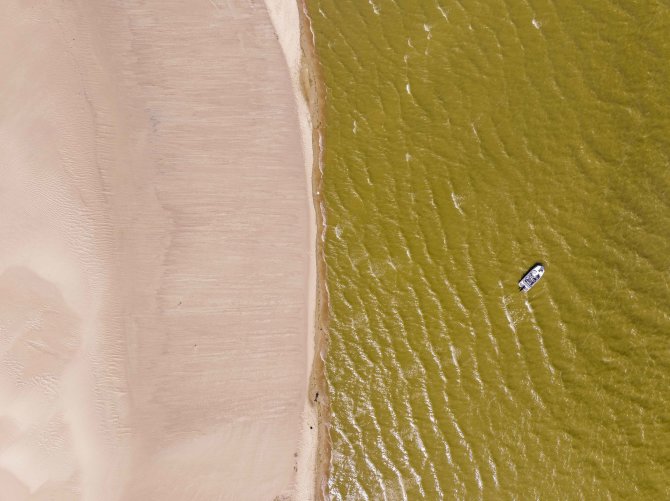D. Jasaitis writes: “There is a lot of water in Neringa. Very much.”
“According to the data of the water measuring station located at the Curonian Lagoon near Juodkrante (on the Meteo website), the water level has risen significantly in the last ~30 hours, even by about 60 cm, so the water of the lagoon has started to drain some lower areas of the Curonian Spit” – on his Facebook meteorologist Gytis Valaika explains the situation on the account “Weather and climate in Lithuania”.
The situation was caused by a low pressure vortex.
“Such an interesting situation was caused by a low-pressure vortex rotating near Western Lithuania. It was the southwest-south winds caused by it that led to the fact that a lot of water was carried (blown) from the southern part of the Curonian Lagoon to the northern part.
Around 10-11 a.m. the water level began to fall. Late in the evening, the wind will start to blow from the north, causing the water level to drop further.
Similarly, the water level rises or falls significantly on the seashore. For example when the wind blows from the east for a long time, the beaches on the coast of our country widen considerably, because the sea water is blown towards the shores of Sweden”, says G. Valaika.
The mayor of Neringa says he has not seen such a situation in 50 years
The mayor of Neringa, Darius Jasaitis, says that he has never seen such a situation, even though he has been living in Neringa for 50 years.
“In Juodkrante today, if the wind had not calmed down, the residents would probably for the first time in history face the situation on the (Baltic Sea – BNS) shore, when everyone catches carp and crucian carp there at home. The first houses almost got water from the Curonian Lagoon, which, to be honest, I have not seen yet, even though I have been living here for 50 years,” D. Jasaitis told BNS on Saturday.
It was not long before the first houses received water from the Curonian Lagoon, which, to be honest, I have not seen yet, even though I have lived here for 50 years.
According to him, the positive air temperature also contributes to the problem.
“In general, we see that the water level is high. The benches were frozen, so when there is a minus (negative air temperature – BNS), it creates protection, nature protects itself, then when those waves wash away, it just creates an iceberg, everything freezes and protects, but when there are no more winters, it becomes permanent here the question of autumn and spring”, said the mayor of Neringa.
“The water is increasing and as we’re seeing with climate change, that one centimeter rise in certain places results in 3-4 meter water rises through wind and storms.” (…) Probably, in 15-20 years, that problem will only become acute and very, very strong”, D. Jasaitis added.
The mayor of Neringa emphasized that it is necessary to renew the embankments of the lagoon.
“The embankments, which were built many years ago, at that time performed their function perfectly since stopping the destruction of the Curonian Lagoon, but the current embankments, although they are the latest ones built, the water overflows more and more often, which means that we have both Preila, both in Pervalka, in Nida, and in Juodkrantė itself, raise the quays up, if we don’t want to be washed away”, explained D. Jasaitis.
The mayor said that the water level has now returned to normal, and the damage is minor:
“Currently, the sidewalk in Juodkrantė itself is destroyed, I was not in Preila, but no one there reported any problems. Already everything has subsided, the water has receded.”
Source: www.15min.lt



